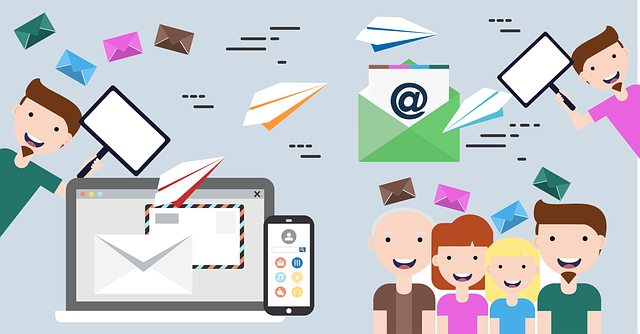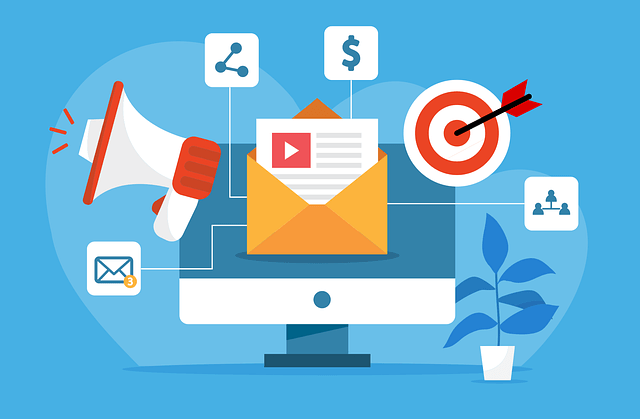Discovering your email has been hacked can feel like a punch to the gut. It’s not just a breach of your privacy; it can also be a gateway for hackers to access more of your personal information. But don’t panic! Taking swift action can mitigate the damage and secure your account from further attacks.
In the digital age, your email is the key to your online identity, making it a prime target for cybercriminals. Knowing what steps to take immediately after you realize your email has been compromised is crucial. From changing your password to monitoring your account for suspicious activity, we’ll guide you through the process to regain control and safeguard your digital life.
Recognizing the Signs of an Hacked Email Account
Recognizing the signs of a compromised email account is crucial in taking timely action to secure your digital footprint. If you’re unsure about the security of your email, there are clear indicators that should prompt immediate concern.
Firstly, unexpected password reset emails from other services you use can be a glaring red flag. Hackers often attempt to breach your other accounts once they have access to your email. Also, if friends or colleagues receive spam or unusual messages from your email address, it’s a strong sign that your account’s security has been breached.

Another telltale sign is the inability to log into your email account. If your password no longer works and you haven’t changed it, a hacker may have already altered your access credentials. Additionally, check your sent items or email drafts; unauthorized emails or drafts that you don’t recognize are indicative of someone else using your account.
Lastly, an increase in unknown subscription emails or alerts saying you’ve signed up for services you don’t recall can indicate a hacker is using your email to register accounts elsewhere.
Monitoring for these signs and acting swiftly can make a significant difference in safeguarding your personal information and preventing further unauthorized access to your digital life.
Immediate Steps to Take When Your Email is Hacked
Discovering your email has been compromised can be unsettling, but taking prompt action can significantly mitigate potential damage. Here are the actions you should carry out immediately to secure your email account and protect your digital identity.
Change Your Email Account Password
Start with strengthening your account’s security by updating your password. Ensure it’s complex, unique, and not reused from other accounts. Incorporating a mix of letters, numbers, and symbols makes it harder for cybercriminals to crack.
Update Security Questions and Contact Information
Often overlooked, security questions and backup email addresses or phone numbers are vital for account recovery. Review and update these to prevent hackers from using them to regain access.
Enable Two-Factor Authentication (2FA)
Adding an extra layer of security, 2FA requires a second form of identification beyond your password. This could be a text message code or an app that generates temporary codes, significantly decreasing the likelihood of unauthorized access.

Scan Your Computer for Malware
If your email was hacked, there’s a chance your device might be infected too. Run a comprehensive malware scan to detect and remove any threats that could be harvesting your information or compromising your security further.
By following these steps, you’re not just responding to the immediate threat but also fortifying your email account against future attacks. Maintaining vigilance and updating your security practices regularly can help keep your digital life secure.
Changing Your Password and Updating Security Settings
Once you’ve discovered your email has been compromised, immediately changing your password is crucial. Your new password should be strong, incorporating a mix of characters, numbers, and symbols to ensure it’s not easily guessed. Aim for uniqueness and avoid using the same password across different platforms.
In addition to resetting your password, updating your security settings plays an essential role in fortifying your email’s defenses. This includes changing your security questions. Opt for questions that can’t be easily answered with information someone might find online or guess.
Enabling Two-Factor Authentication (2FA) adds an extra layer of security. With 2FA, accessing your account will require not only your password but also a verification code sent to your phone or another device. This makes it significantly harder for hackers to gain unauthorized access, even if they have your password.
Remember to regularly review your account’s activity logs. Unfamiliar log-ins might indicate that your account is still compromised or under threat. Identifying these early can help you take action faster.
Finally, keep your contact information in your email account up to date. This ensures you can recover your account more easily if you’re locked out and helps to verify your identity when contacting customer support for any security issues that arise.
Contacting Your Email Provider for Assistance
Immediately after you’ve secured your account with a new password and enhanced security measures, it’s crucial to reach out to your email service provider for further assistance. This proactive step is essential for several reasons. First and foremost, your provider can help ensure that your account recovery actions have been effectively implemented. They may also be able to offer additional security suggestions tailored to your situation.
Email providers often have dedicated support teams for security concerns, equipped to guide you through the recovery process. These professionals can also help identify any vulnerabilities in your account and suggest ways to fortify it against future attacks. When contacting them, be prepared to provide necessary details about your account and any unusual activity you’ve noticed. This might include times and dates of suspicious logins or messages you didn’t send.

Furthermore, your email provider can alert you to any new security features or updates you might have missed. Implementing these can significantly enhance your account’s defense mechanisms. Remember, communication with your provider should be a top priority as it not only assists in the immediate resolution of your concerns but also helps in safeguarding your digital presence in the long run.
Maintaining an open line of communication with your email service provider ensures you’re always ahead, leveraging their expertise and resources to secure your account efficiently.
Monitoring Your Account for Suspicious Activity
After you’ve secured your email by changing passwords and enabling 2FA, it’s crucial to remain vigilant. Monitoring your account for any signs of unauthorized access or suspicious behavior is a continuous process. This means regularly checking your sent items and trash folders for emails that you don’t recognize. Fraudulent emails sent from your account can often end up in these folders if the hacker attempts to remove traces of their activity.
Stay alert for alerts from your email provider about attempted logins from unfamiliar devices or locations. These notifications are often the first sign that someone else is trying to access your account. If you receive such alerts, follow the recommended actions immediately.
Reviewing your account’s login activity is also a powerful tool in your security arsenal. Most email providers offer a feature that allows you to see the dates, times, and locations of recent login attempts. Look for any activity that seems out of the ordinary. If you spot logins at unusual times or from places you’ve never visited, it’s a clear indication that your account security may be compromised.
Remember, staying proactive and vigilant is key to ensuring the safety of your email account. Regularly monitoring your account for suspicious activity helps you catch and respond to potential threats before they escalate.
Conclusion
Securing your hacked email account is just the beginning. It’s crucial to remain vigilant, constantly monitoring for any signs of suspicious activity. Make it a habit to check your sent items and trash folders regularly. Stay on top of alerts from your email provider about unfamiliar logins and scrutinize your login activity for anything out of the ordinary. Remember, being proactive about your email security is the best defense against future threats. By following these steps, you’ll not only recover from a hack but also fortify your account against potential breaches. Stay safe, stay alert, and keep your digital life secure.
Frequently Asked Questions
What should I do immediately if my email account is hacked?
Change your password, update your security questions, and enable Two-Factor Authentication (2FA) as soon as possible to secure your hacked email account.
Why is it important to review my account activity logs?
Reviewing your account activity logs helps you to spot any unauthorized access and understand the extent of the hack, allowing you to take appropriate measures.
How can I ensure my contact information remains secure?
Keep your contact information up to date and choose secure, hard-to-guess security questions to protect your account from being easily accessed by hackers.
What additional steps should I take after securing my account?
Continue monitoring your email for suspicious activity, check sent items and trash for unauthorized emails, and stay alert for alerts about unfamiliar logins to ensure ongoing security.
Why is monitoring login activity crucial?
Monitoring login activity helps spot unusual access patterns, indicating potential security threats, allowing you to respond to them promptly and maintain your email security.
